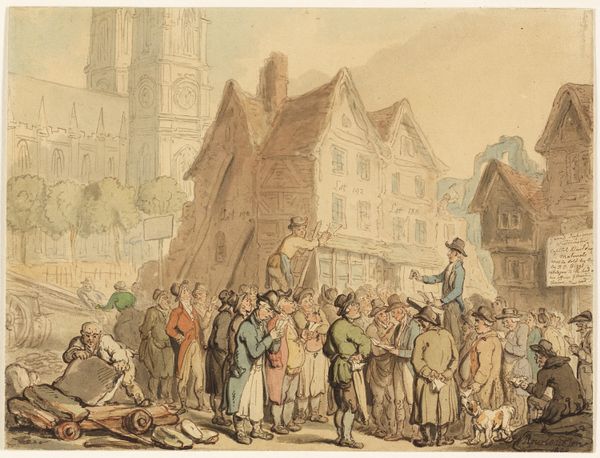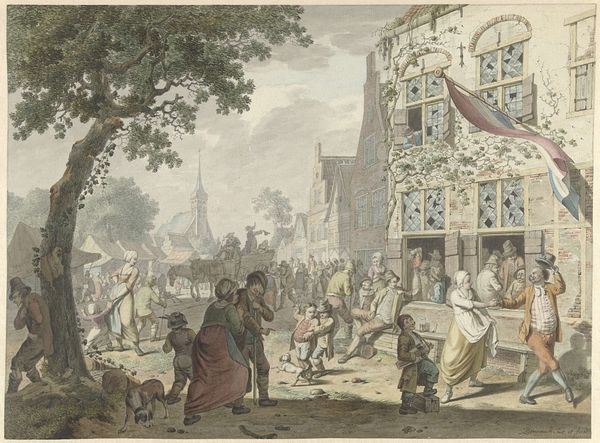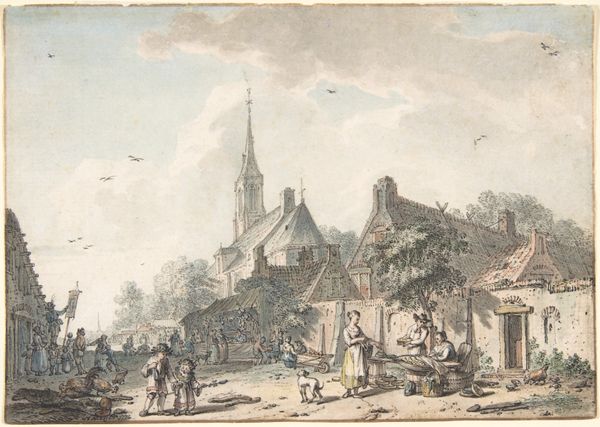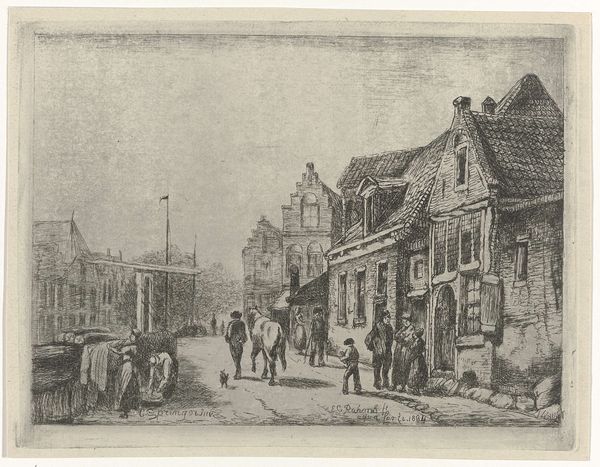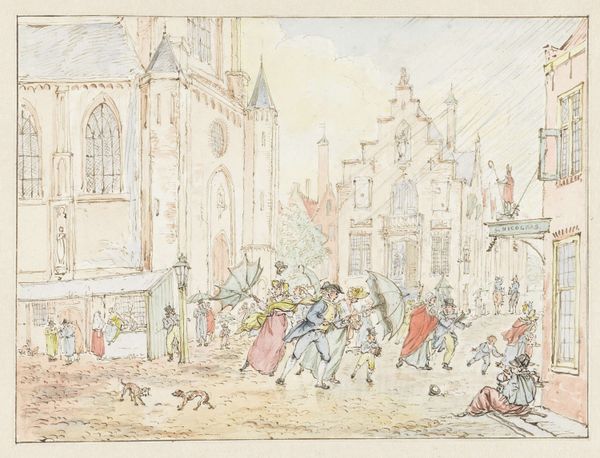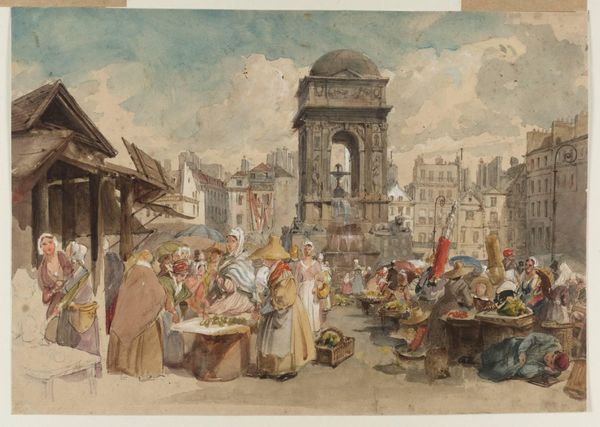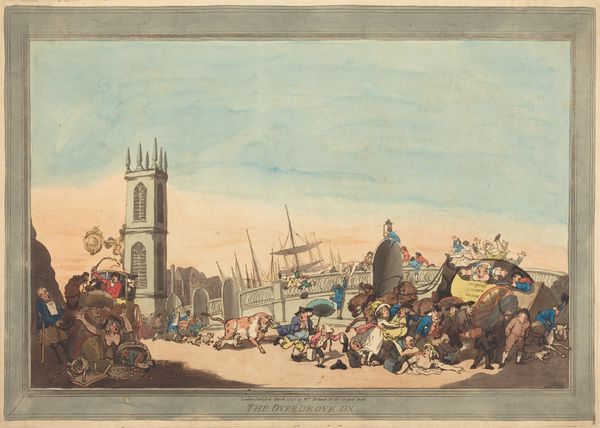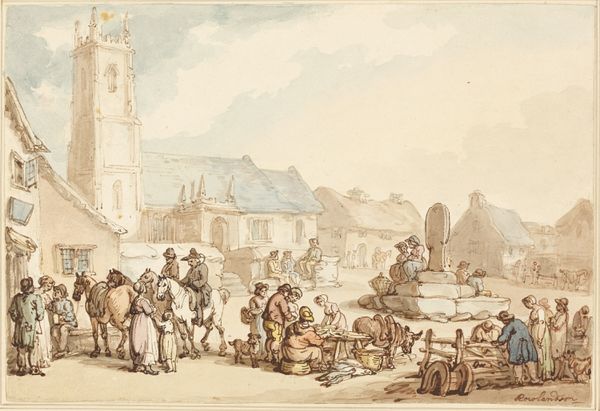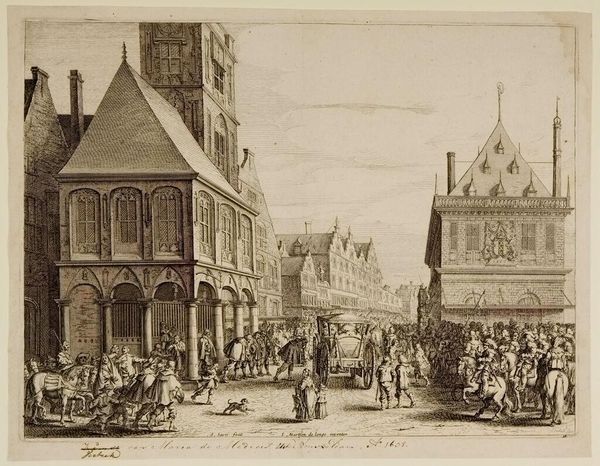
Kermis te Leeuwarden, de Oldenhove in het verschiet 1853
0:00
0:00
hermanfrederikcareltenkate
Rijksmuseum
painting, watercolor
#
dutch-golden-age
#
painting
#
landscape
#
watercolor
#
cityscape
#
genre-painting
#
mixed media
#
watercolor
#
realism
Dimensions: height 109 mm, width 177 mm
Copyright: Rijks Museum: Open Domain
Curator: Looking at this watercolor, one can almost hear the lively sounds of the fair! This piece by Herman Frederik Carel ten Kate, created in 1853, is titled "Kermis te Leeuwarden, de Oldenhove in het verschiet," or "Fair in Leeuwarden, the Oldenhove in the distance." It resides here with us at the Rijksmuseum. Editor: It’s wonderful—so immediate and raw. There's a strong sense of spectacle, but filtered through this… melancholic haze. A frenetic energy muted by the aged paper and somber colors. The crowd is present and layered, with different economic and social positions reflected in the composition. Curator: Ten Kate, known for his genre scenes, gives us more than just a depiction of a fair. It reflects the social dynamics of mid-19th-century Dutch society. We see different classes mingling, and the prominent Oldenhove tower serves as a silent observer of it all. Its unfinished form also serving as an analogy for the liminal states in which Dutch society found itself as the era progressed. Editor: Absolutely, and the Oldenhove being a visual symbol of that era's failures to consolidate a modern vision of nationhood. The composition is really interesting, directing my attention through to its subjects: from the well-dressed figures in the foreground, engaging in trade; upwards through the entertainers visible within a temporarily built stage; and lastly beyond the structures created to manage public celebration towards what seems like a historical scar on the land! A crooked spire in need of attention! This is something I would love to consider when analyzing how temporary zones of liberation, celebration, and release can and perhaps do serve the function of distracting populations. Curator: It's fascinating how he captured such a dynamic scene with watercolors. Note how he masterfully used washes to convey the atmosphere, the crowd's movement, and the grandeur of the Oldenhove. Editor: Right. But to me, it is a work that prompts us to critically consider the societal function of spaces for public spectacle. It speaks to the constant negotiation between established institutions and the more ambiguous collective needs that always inform historical narratives and contemporary life. The art serves as both entertainment and document. Curator: A point well made! It is rewarding to revisit pieces like this, and see them re-framed through different cultural lenses! Editor: Exactly, each new angle of analysis breathes new life into historical materials. It allows us to critically analyze even the past as we inform our presents and future.
Comments
No comments
Be the first to comment and join the conversation on the ultimate creative platform.

